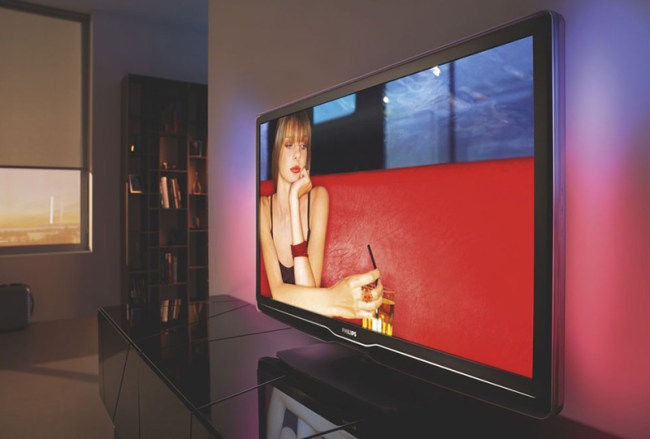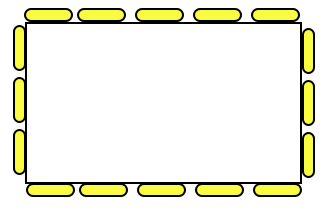
When we first started our podcast there were five competing technologies vying for your living room. Today its pretty much down to LCD and Plasma. Most would say LCD is running away with the market but Plasma is hanging in there. So what about LED? LED is not a new TV technology but rather a different way to light the LCD. A Liquid Crystal Display is a glass panel that works by controlling the opacity of segments of itself by varying the electrical signal. Each individual segment, called a pixel, acts as a shutter to control the amount of light being passed through. The light source is what we will be focusing on today.
Today’s Show:
News:
- DVRs In 44% By 2015
- Target Offers $99 HDTV Installations
- 3D-Capable TVs to Achieve 1.2M+ Shipments in 2010, 15.6M in 2013
Other:
- Top Netflix rentals in 2009 for certain metro areas by zip code
- Sony Japan intros PS3 DVR, digital tuner
LED TV Technology
When we first started our podcast there were five competing technologies vying for your living room. Today its pretty much down to LCD and Plasma. Most would say LCD is running away with the market but Plasma is hanging in there. So what about LED? LED is not a new TV technology but rather a different way to light the LCD. A Liquid Crystal Display is a glass panel that works by controlling the opacity of segments of itself by varying the electrical signal. Each individual segment, called a pixel, acts as a shutter to control the amount of light being passed through. The light source is what we will be focusing on today.
Background
On current LCD TVs, fluorescent lights are used to back-light screens. You may have seen the acronym CCFL, it stands for Cold-Cathode Fluorescent Lamp and these types of lamps can even be used to light your home. To back-light TVs, a series of these lights are laid horizontally across the back to the TV.

There is typically a plastic sheet in front of the light which will distribute the light evenly onto the glass panel. One of the difficulties in LCD TVs is creating true black. The reason for this is that the light is always on. To darken a screen the light must be blocked and as hard as manufacturers try some light bleeds through.
LED
LEDs have recently become a popular means for lighting LCD screens. Some of the advantages for moving to LED are size, power, and image quality. LEDs are smaller than the CCFL tubes and they use less energy. A side benefit of using less energy is that the TV produces less heat which can extend its life. Better picture quality depends on what style of LED lighting is used.
There are two styles of LED lighting, edge or direct mount. Edge lighting, as the name implies, arranges the LEDs along the edge of the panel. Because the LEDs are mounted on the edge the TVs are much thinner. The light is channeled behind the glass using guides to provide even lighting. The disadvantage of edge lighting is that you can not use local dimming to increase the TV’s contrast. You still get the energy and size benefits however.

Direct lit LEDs place the LED behind the glass. There can be as many as 1500 LEDs (depending on the size of the TV) placed in an array to light up the slightly more than two million pixels of your 1080p TV. Each LED can be responsible for almost 1400 pixels (or more on smaller sized TVs). The main advantage of the direct lit LEDs is that the TV can use local dimming. That means if an area of the screen is dark the LEDs can be turned off thereby increasing the contrast.

Because the LEDs are behind the glass they are not as thin as edge mount LEDs. There are two types of direct lit LEDs, White and RGB. White LEDs are simlar to their CCFL cousins in that they produce white light. The Samsung UA40B710 is a TV that uses white LEDs. RGB LEDs use three colors (red, green, and blue) which make TVs with this kind of light capable of a broader color range. Those who favor this type of LED say that there is less green push. Sony uses RGB lights in their BRAVIA LED TVs.
Some things to consider
- LED color consistency – It is difficult to make LEDs in consistent white color and this may affect your picture. Manufacturers will not take back a TV because the color is slightly off. You could try to return it to BestBuy until you get one that is perfect.
- Some Edge Lit TVs have uneven lighting. Again try explaining to the manufacturer that the TV lighting seems uneven. You can also do the Best Buy thing with this one too.
- Reliability? We’ve all seen the LED traffic lights that were supposed to last for 20 years without needing replacement. I stopped counting how many signals have multiple failed LEDs. Will our TVs suffer the same fate?
- Price – Right now you are paying a premium for buying a TV that has a picture that is close to what plasma has always had.

Editors' Recommendations
- Best Samsung TV deals: Save on 4K TVs, QLED TVs, OLED TVs, 8K TVs
- Best 70-inch TV deals: Get a big screen for sports for $420
- Best subwoofer deals: Up the bass for as low as $90
- Best Walmart TV deals: 43-inch 4K TV for $195 and more
- Best projector deals: Replace your TV with a big screen from $58




